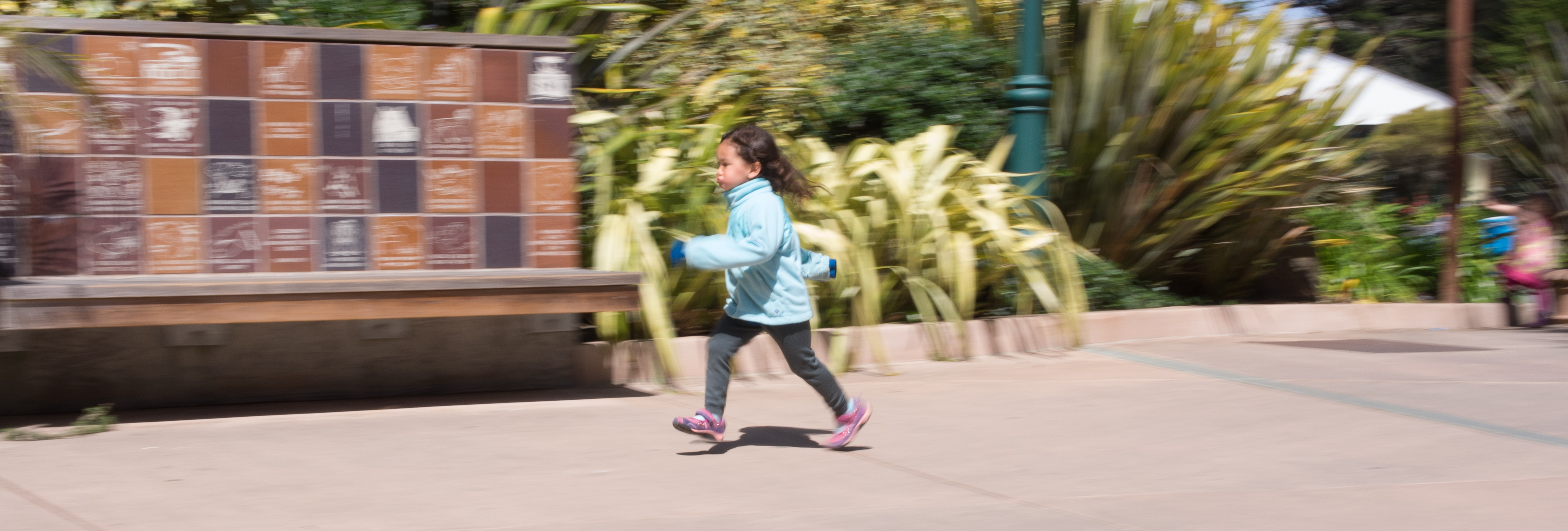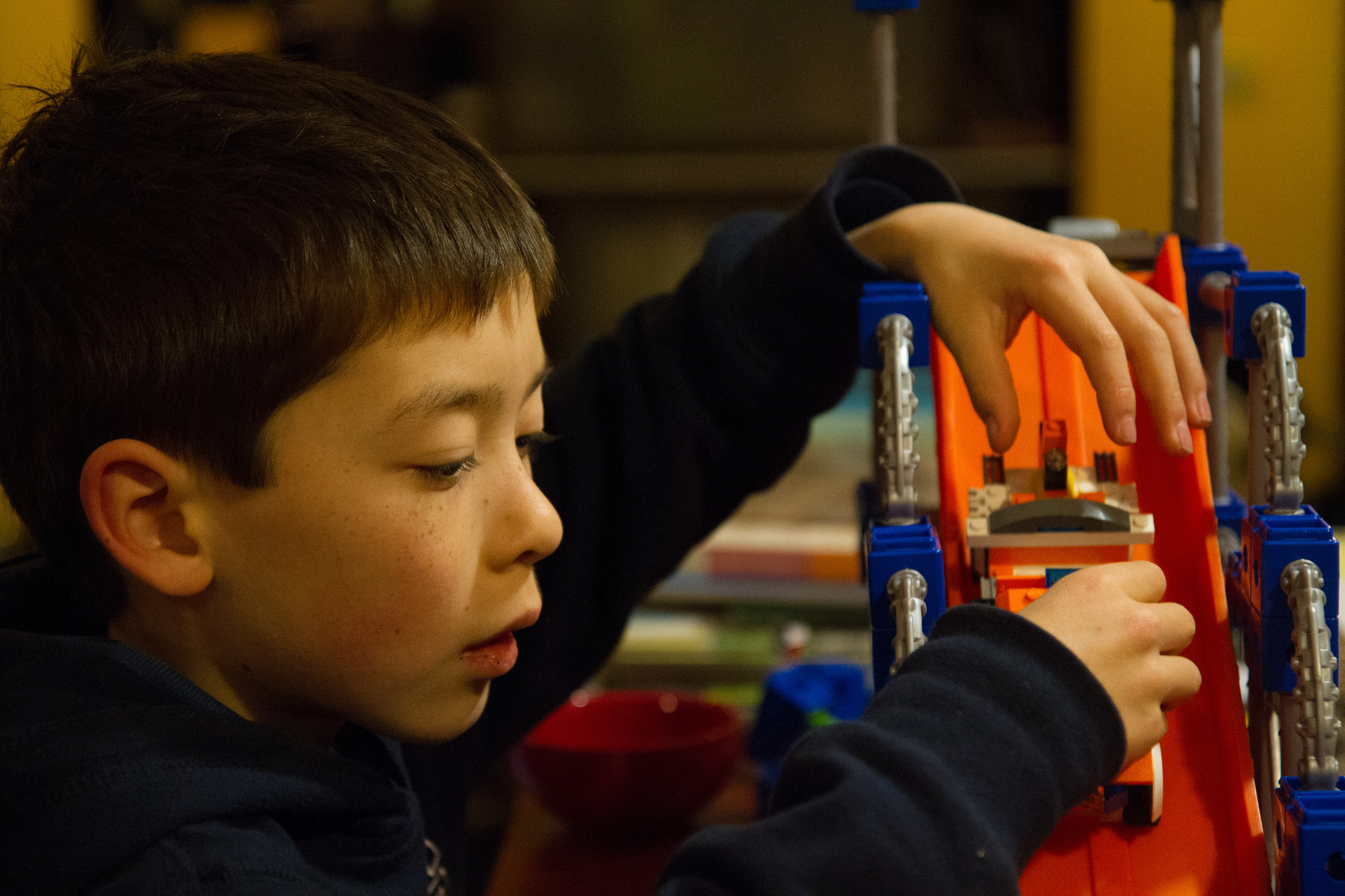

I discovered weights freshman year in college, and as a weak and skinny kid, I found them to be a revelation. One of my friends had played football in high school, and he and I would work out together often. He worked out hard — at least five days a week — and I liked his routine, so I adopted something similar.
I rapidly gained strength, but I also peaked quickly. Naturally, I tried working out more, but it didn’t seem to help. I maintained more or less the same routine throughout my sophomore year without any significant gains, which I found frustrating and demotivating. It led to long stretches where I would stop working out altogether.
Junior year, I restarted my workouts, and again saw little progress. My next door neighbor that year turned out to be a serious bodybuilder. One day, I asked him for advice. I started by telling him how much I worked out, and he cut me off. “You’re working out too much,” he said. “Your body needs rest to recover and build muscle. Try doing 45 minutes three days a week.”
“Are you sure?” I asked incredulously. Everything he said made sense except for his specific recommendation, which amounted to half as much as I had been doing for years.
“Try it,” he insisted.
I did. After just a few weeks, I saw marked improvement for the first time in over a year. I was floored. It turned out that, in order to get stronger, I just had to do less.
The Power of the Pause
I am often approached by groups with go-go-go cultures asking how to:
- Build trust and morale
- Work together more strategically
- Learn via experimentation
- Align their structures and behaviors with their desired values and culture (often, these days, with a focus on equity)
When I hear more about their current situations, I often find myself channeling my bodybuilder friend. You can't do any of these things if you aren't regularly slowing down to pause, to:
- Reflect together
- Listen deeply to each other
- Have hard conversations with each other
- Make adjustments
- Rest and recover
If you're not committed to developing your muscles around pausing, you not only will not succeed at any of the above, you may even hurt yourselves.
When my friend told me to try working out less, I was more than happy to try, even though I was skeptical. When I tell other collaboration practitioners they need to practice pausing, I get the same skepticism, but none of the joy. There are reasons why they are go-go-go, and trying to shift those habits and mindsets is not only very hard, it can be downright anxiety-inducing.
I know this all too well. For the first dozen years of my career as a collaboration practitioner, I was the worst perpetuator of this go-go-go mindset. It took me six years of consistent effort and constant failure along with a health scare to learn how to slow down. It's made me a better person and a better practitioner, and it's also made me tremendously empathetic to others who are suffering from similar afflictions.
I blogged a lot about my journey as I was going through it, both on my personal blog and on this one. I also shared a tool — my Self-Care Dashboard — that ended up being enormously useful. But I never bothered writing about how I eventually turned a corner, how I've been able to sustain this balance, and the impact it's had on my life and my work. I'd like to correct that here, both to complete the record and also hopefully to offer actionable encouragement to other practitioners dealing with this challenge.
Developing Bad Habits
The first thing to know about my go-go-go ways is that I wasn't always this way. I was capable of tremendous focus and endurance, especially when it came to things I was passionate about, but I also valued my chill-out time. My childhood was spacious and wonderful, full of time to think, explore, and zone out. My first few years after college were similar, which enabled me to realize my passion for collaboration as well as to develop some initial practices.
My lifestyle started to change for the worse when I cofounded my first collaboration consultancy in 2002. I was extremely fortunate to have a mentor who taught and encouraged me and a cofounder with whom I could play and learn. But I was also in my 20s with no formal experience and a job description that I had more or less made up. Moreover, we were trying to make do in a down economy.
Needless to say, business was not good. I went into debt and barely scratched a living for several years before things slowly started turning around. It was stressful and unhealthy, and even though I was barely making any money, I found myself working all the time. I was also young and single, and I suffered a bit from the Silicon Valley mindset that idolatrized struggle before success. I thought I was simply paying my dues, like any good entrepreneur or changemaker, and if business ever got better, I promised myself that I would return to my more balanced ways. Unfortunately, I was not precise with myself about what "business getting better" looked like, and my difficult habits and scarcity mindset continued to perpetuate themselves.
In 2009, three things converged, causing me to finally reconsider my ways. First, I experienced the painful end of a long relationship. Second, I was massively burned out. Third, my then four-year old nephew, whom I adored (and still adore), came to visit San Francisco for the first time ever, but I was so busy that week, I barely spent any time with him. I was extremely upset about this, and it caused me to reflect deeply on what I was doing and how I could change.
First Steps
One of the first and best things I did was to hire a coach. She helped me to articulate a clear vision of what a balanced life looked like for me. Put simply, all of the best, most balanced times of my life had three things in common: basketball, books, and lots of time with family and friends. Imagining a life replete with these three things made me feel light and happy, and they became my personal North Star.
The next step was to understand what, professionally, was preventing me from having these things. Two answers quickly came to mind: Bad habits perpetuated by a fear of not making enough money and a constant feeling of isolation. I was lucky to have community, but what I needed were colleagues. If I could make more money, and if I felt like I was part of a team, I thought I might take a break every once in a while, which would hopefully and eventually lead to me to my North Star.
I still had more questions than answers, but I made two concrete changes as a result of my coaching sessions. First, I raised my rates for the first time in seven years. More money, I reasoned, would give me more space. I considered myself to be one of the top people in the field, and I had known for years that my rate was not commensurate with others, but my deeply engrained fear of not getting enough work had prevented me from raising them earlier.
Second, I decided that I would never take on another complex systems change project without an equal partner. This decision both thrilled and terrified me. On the one hand, I craved partnership. On the other hand, it meant that I wasn’t just raising my rates, I was essentially raising and doubling them. Would I ever get any work again? I believed, in my head, that I would. I had seen others do it, so I knew it was possible, but I was still really scared.
Fortunately, I was able to test these changes almost immediately. The CIO of a Fortune 100 company approached me about some possible work. He fit the profile of a lot of past clients, in that he had tried working with a few traditional (and very expensive) management consulting firms, he had been dissatisfied with their results, and he was looking for something more outside-the-box. He was already talking to some prestigious design firms, when a colleague mentioned me as a possible candidate.
I felt excited about the possibility of working with him, I knew that budget was not going to be an issue for him the way it might be for a smaller organization, and I already had someone in mind with whom I wanted to partner. I thought my chances of getting the work was low, which emboldened me to really go for it — to put together a team of folks with whom I really wanted to work and to propose what I felt would be the ideal project without constraining myself. When I put together my budget, I could feel my palms sweating and my heart beating. I had managed projects with large budgets before, but I had never before written a proposal for that large a sum of money.
Somehow, we got the work! He and his team turned out to be dream clients, and a few members of the team I had pulled together became the core of the consulting firm I cofounded one year later.
After we secured a verbal agreement with our client, we had to work through some bureaucracy. I had been planning a vacation a few months in advance, but as the date approached, we had still not agreed on an actual contract, and I felt old anxieties cropping up. I strongly considered canceling my vacation, but my partner insisted that she had everything under control and that I should not only go, but fully disconnect while I was gone. I listened to her, and everything worked out. The structures I had created and the people with whom I had surrounded myself liberated me to take my vacation, my first in eight years.
Falling Over and Over Again
I felt relaxed for the first time in my career, and it was showing in the work. I was excited about new opportunities, and I loved everyone with whom I was working. More importantly, my life was feeling more spacious. I thought I had turned a corner. Unfortunately, I had confused taking a few steps with walking. I still had a lot of inner and outer work to do, and — as it turned out — I was going to have to fall a lot more along the way.
Things started getting out of balance again when a few of us decided to formalize our partnership. We spent a lot of time thinking about what we wanted to build together and how. In addition to being great consultants and building a great company that modeled our values, I wanted to explore ways of working outside of consulting, as I was feeling like we were reaching the ceiling of the impact that consulting could have. But, in theory at least, I was happy for that to be a stage two project, focusing our initial energies on building a great consultancy.
Over the course of several months, we converged on three priorities for our first year, the third of which was, “Space for Renewal, Learning, and Play.” Everyone was fully committed and aligned around this goal, and we did some things well. We did a good job of protecting other people’s time. We instituted practices such as starting all of our meetings with checkins, a tiny, but much needed pause that enabled us to breathe and be human together on a regular basis. We started tracking our time, which we all hated, but which gave us real data to see how we were doing collectively and to make adjustments accordingly. I designated my Wednesdays as "play days," which at minimum meant no meetings and at maximum meant open time to read, experiment, or simply take a break.
Unfortunately, I was still falling back on a lot of terrible habits. Running a company is stressful. A lot of people are depending on you to bring in revenue and to create a healthy, thriving work environment. I also felt urgency to do more. On top of the day-to-day challenges of building a successful consultancy, I was anxious to at least start exploring models outside of consulting, even though we had agreed not to prioritize this that first year.
All of this pressure — some real, some self-imposed — kickstarted my superhero complex. It was important to me that everyone else on the team had balance in their lives, but I believed that I could make do without, at least temporarily. I was motivated, I was confident in my endurance, and I felt it would move all of us forward without harming anyone. Besides, it would only be for a little while. Once we got over the hump, I could focus on restoring balance for myself.
Of course, it didn't work out this way. As a leader, I was not modeling the behaviors I was professing to prioritize. Everyone noticed this, everyone felt stressed by this, and — fortunately for me — everyone called me out on this. Moreover, intense stress and not enough rest was making me a bad teammate. It also was impacting my health. I thought I felt okay, but I discovered at a regular checkup that my blood pressure was alarmingly high.
This was the ultimate wakeup call for me. I needed to prioritize balance immediately. My life literally depended on it.
Turning the Corner
Shortly after founding my company, I started tracking a set of self-care practices every week on a dashboard that all of my peers could see. It was stark to see how often I neglected all of my self-care practices, including the low-hanging fruit, such as going for a walk. The simple act of tracking helped me make sure I was always doing some form of self-care, which was an important start.
However, it also made me see that "some" self-care was not going to be enough. This forced me to explore more deeply why I wasn’t able to make time to take better care of myself. I realized that working made me feel powerful and in control. When I felt like things were going poorly in my personal life, I defaulted to working as a way of feeling better about myself. I needed to confront these patterns head-on. I also adopted some simple tactics that helped. In particular, I took up photography as a hobby, which served as a much-needed creative outlet, helped reconnect me to my community, and unexpectedly had a profound impact professionally.
All of this core work turned out to be critical for me to implement the simplest and hardest solution of them all. In order to work less, I needed to stop doing something. That meant taking something off my list, which I had never managed to do.
I decided to leave the company I had co-founded, which — to this day — remains the hardest professional decision I have ever made. Leaving helped a lot. I was able to maintain a modicum of balance for the next few years, but I noticed that I easily fell back into old habits. I re-focused on working less, even declaring my intentions here on this blog. Repetition helped, and I was finally getting the hang of being real with myself and taking things off my plate. But, as it turned out, I needed to do one more thing before I truly turned a corner. I needed to stop checking my email so often.
Turning off my work email before dinner and on weekends had long been on my list of self-care practices. They were the easiest to do, and yet, after three years of tracking, they were the things I practiced the least. All of my hard work finally made it possible for me to do these “simple” things, and my self-care scores soared as a result. More importantly, it felt good. It turns out my email behavior was a good leading indicator of how much balance I had and also a keystone habit that unlocked other important practices.
In September 2016, I went to my self-care dashboard — as I had been doing every week for over four years — and decided that I didn't need to track anymore. After six long years of failing over and over again, I felt like I had finally achieved the balance I was seeking.
The following year, my nephew and his little brother came to visit me in San Francisco for the first time since that crazy week in 2009. I cleared my schedule so that I could maximize my time with them. We played basketball every morning, we went on long walks, and we ate delicious food. As I drove them to the airport at the end of their trip, I started to cry, not just because they were leaving, but because I remembered what my life and work was like the first time my nephew had visited eight years earlier, and I felt grateful for how my life had changed since.
Takeaways
It's been five years since I stopped tracking my self-care practices, and I've maintained this balance since. Not only am I as happy, healthy, and fulfilled as I've ever been, I am a significantly better collaboration practitioner than I ever was. Just as my bodybuilder friend explained with weightlifting, to get better at my work, I “simply” had to learn how to do less.
I share these stories not because I've landed on some magic formula for achieving self-care and work-life balance. Everyone's story and circumstances are unique, and I don't want to pretend that what worked for me will work for everyone. I share these stories, because I want folks to know that self-care is really, really hard. If you don’t already have work-life balance, there are likely very real, very hard reasons for this — both internal and external.
Achieving balance requires hard work, experimentation, and tons of support, and — if your experiences are anything like mine — you will fail over and over again. Even if you manage to achieve balance, you will always have to work to maintain it. You will constantly face obstacles, and old habits and mindsets will continue to rear their ugly heads. At the same time, achieving balance will also strengthen your faith in the importance and power of going slow, which will serve as motivation for you to continue your practices.
This matters, especially for collaboration practitioners trying to improve the performance of their groups. Working with urgency is not the same as working urgently. In order to be agile and impactful, in order to learn as you go, in order to do values-aligned work, pausing regularly isn't nice, it's necessary. One of the most powerful acts of leadership — regardless of your job title — is to model this. It's hard, but it may end up being the most important and impactful work that you do.
Podcast: Play in new window | Download
Subscribe: RSS


